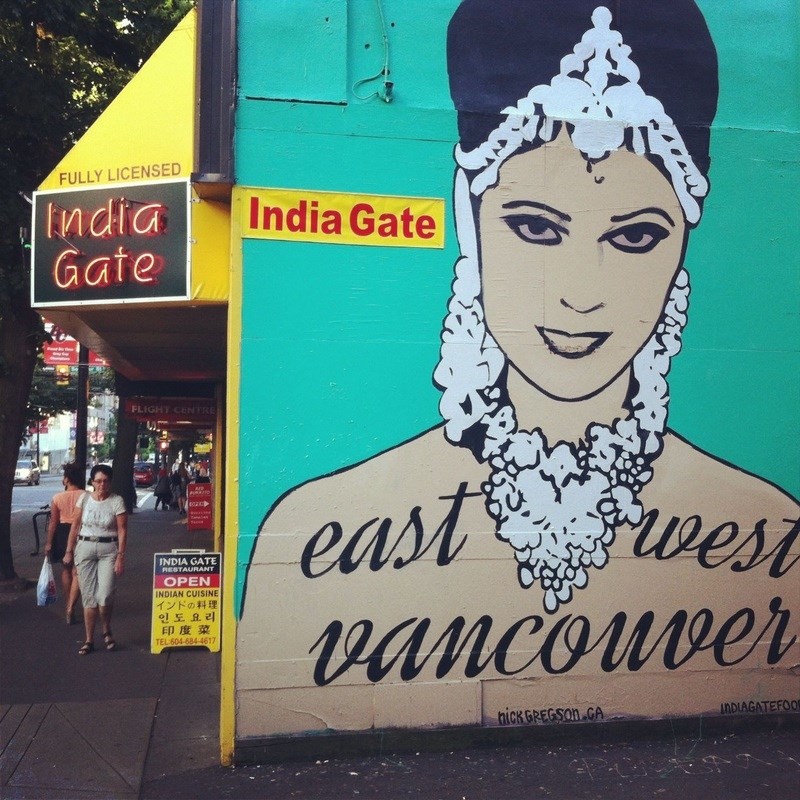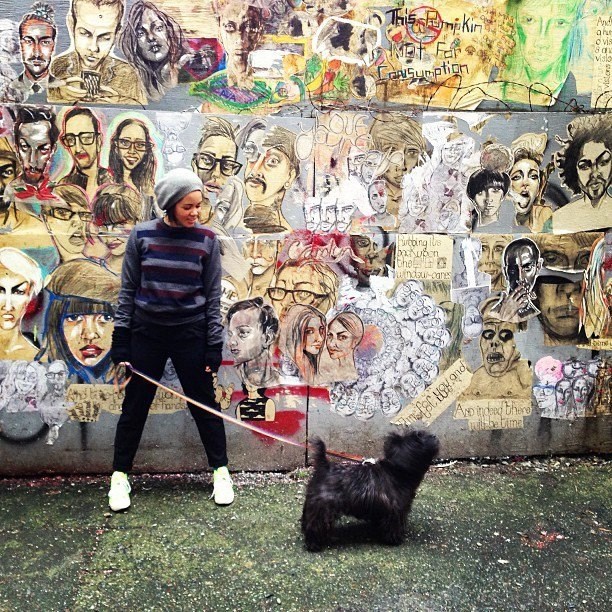• This story is the second in a five-part series called Underground Vancouver, delving into the city’s little-known subcultures.
In the 1990s, graffiti artists had plenty of space to practice their artwork. Today, due to both construction and regulation, the “free walls” where street artists can practice and paint are a diminishing resource, and artists say this is a problem that the city needs to address.
"It's important to have space for street art because it's important to have space for all art,” says local graffiti artist Take 5. "We have to look at why there are these sort of pervasive attitudes that see graffiti as a threat. There has really been no space for dialogue between the artists and the policy makers.”
Take 5 started doing graffiti in 1992, when the skateboarding community overlapped with the graffiti community, and there was plenty of mentorship and space to hone their skills.
“Both of these subcultures take place in the street, so it was a natural overlap for graffiti artists to start introducing themselves to skateboard artists, and many skateboarders became graffiti artists,” he explains.
Take 5 is a master of wild-style graffiti – a geometric, old-school style that involves taking letters and bending them to the point where they are almost illegible. He recalls the days when there were plenty of free walls for artists to practice on, from behind the Ivanhoe on Main to the Lonsdale Quay parking lot in North Vancouver, and the community flourished. Now, the tunnel at the Leeside skate park is one of the few remaining examples and, due to space constraints and competition, is hardly ideal.

“That is a terribly small space and it's inaccessible to a lot of people, so there is constant turnover there, which creates conflict among the graffiti artists because they're competing for space on this quick turnaround,” Take 5 explains. “We need more space where people can practice their skills in a safe environment, free from prosecution and interference from the city as to what the content should be."
Seeing events such as last year’s Vancouver Mural Festival, which centred around buildings in the Mt. Pleasant and Main Street areas, as a starting point, Take 5 hopes that the city will engage more artists in conversation about how to turn Vancouver into a world-class city for art – one that includes graffiti.
“I think that's what's really great about the mural festival, [is] they are [representing] an all-encompassing body of work, and it's not just exclusive to one typical style of art,” he says. "It's very dangerous when we say that one kind of art is allowed and one is not.”
Nick Gregson is a 32-year-old mural artist from East Vancouver. He volunteers with the city on the Arts and Culture Policy Council and does community outreach by teaching art techniques to youth. He currently has about 10 murals around Metro Vancouver, and is working with the city to have more public art spaces available.

"I think there needs to be space set up for all types of art,” Gregson says. "There needs to be a place for tags, a place for [graffiti], and a place for murals.”
Gregson thinks that the city’s attitude to public art is improving, thanks to city-funded projects such as the mural festival, and he encourages people who have ideas about public art to contact him so he can bring them into future meetings.
"Street art has come a long way. That term wasn't even around before,” he recalls. "I think that the society is a different age group now and [millennials] are starting to take over. I think that our age group identified with this type of art.”
Gregson agrees that the city needs to have more sanctuary areas for artists to work, like the walls at Leeside. He thinks that having more free walls will cut down on the number of murals being tagged. He also believes that businesses over a certain size with free wall space should be required by the city to have public art.
"I think [public art] gives artists a voice, and it reflects the culture of the city,” he says.
It also provides an outlet.
"People do graffiti for a lot of different reasons, I think. A lot of people are just angry at society and want to do some vandalism, and that's the way they get their voice heard,” Gregson explains. "It's great because I'm kind of a quiet person, so it's a good way for me to express myself.”
Kat Thorsen is an artist and art therapist who teaches wheatpaste graffiti to at-risk youth. She finds that street art is a great way to inspire youth, and the temporary nature of graffiti teaches them how to let go of their artwork.
“Share it with the community, but not in a way that you're attached to the end product,” she tells them.
Wheatpaste is a style of graffiti (made famous by political artists like JR) that involves plastering pre-drawn art to walls, and has seen a surge in popularity amongst artists in Vancouver.
"It's cheap, doable and quick. So if you're prepared, you can be really quick about it,” Thorsen says.

The paste is made from flour, water and sugar, mixed with boiling water and white glue. Thorsen uses newsprint, which yellows over time, and then she draws with China markers and acrylics, which don’t fade. Once the art is ready, you brush a heavy coating of wheatpaste on the wall, slap the poster on, and then brush over it again.
Other than the white glue, which isn’t essential, wheat paste is organic.
Thorsen says that some pieces stay up for years, because the community really connects with them, but certain pieces are torn down within hours.
"There's no attachment to the outcome of my art for me. It's about people being allowed to interact with it,” Thorsen said. "The teaching part of that, too, is that [the students] can’t own that piece. They have to let the public do what they want to it.”
Thorsen believes that for some people, constantly creating is the best way to keep your mind focused, and wheatpaste is a good way to do this because it isn’t permanent.
"There's this feeling that wheatpaste is a bit more gentle in the community,” Thorsen says. “It allows you to be aggressive and ‘guerrilla marketing,’ but at the same time, you're not ruining someone's space."
She also feels that the city is lacking in spaces for public art, and that it should be a priority to create more free walls in the city, as it beautifies communities, helps people express themselves, and creates conversations.
"Public art is a fingerprint, it's a dialogue. It's like saying, 'We dare to speak,'” she explains.” We don't always know who's doing it and that's what I love. We don't need to know. It could be someone who's been doing art for 50 years, or it could be someone who just wanted to express themselves that day and say, 'I'm here.' For me, it's a very important part of the city.
“There's that element of balancing getting permission, and just going for it,” she adds. “We need to make our mark in life."

